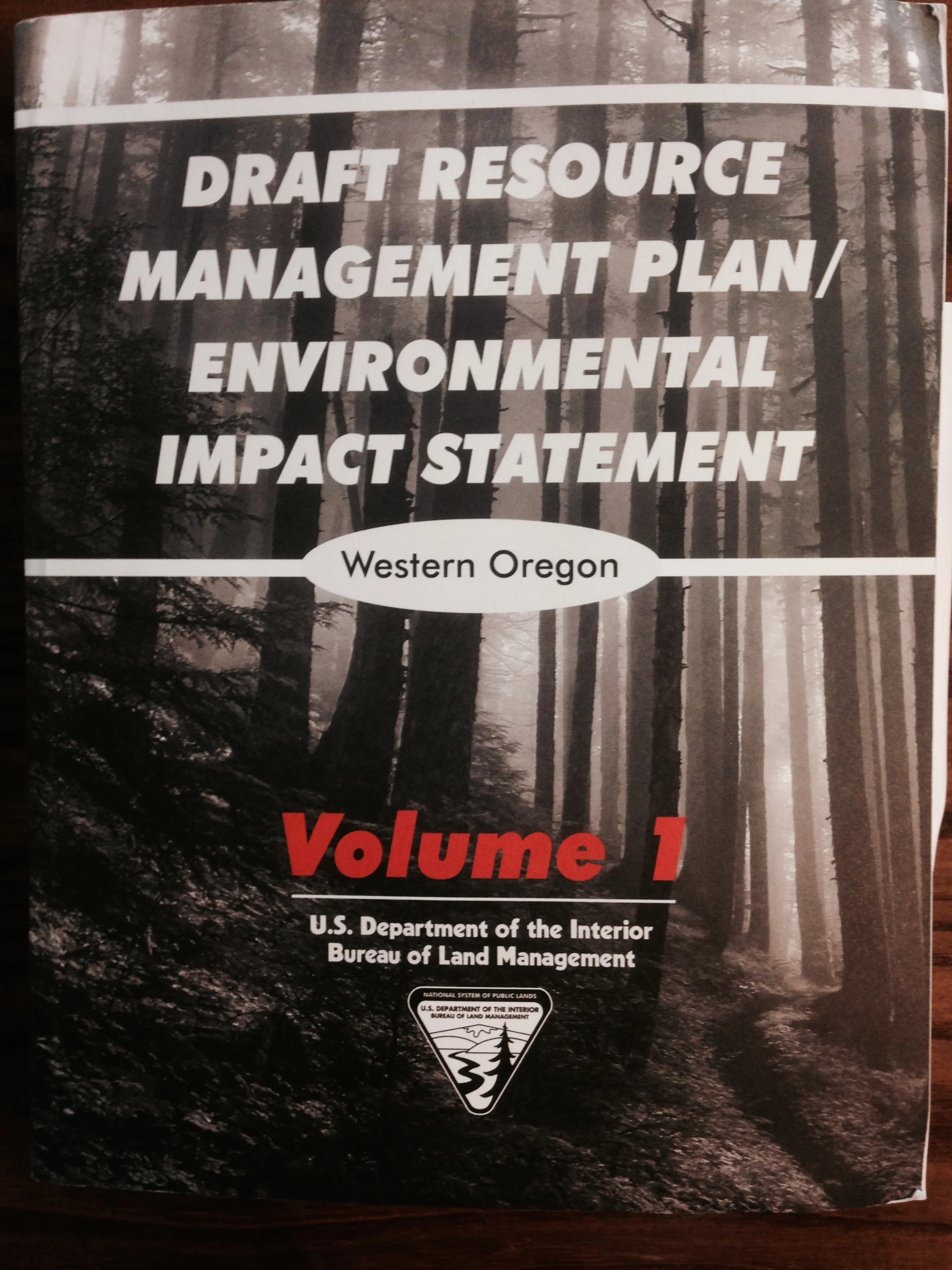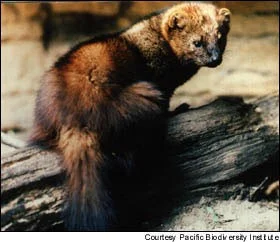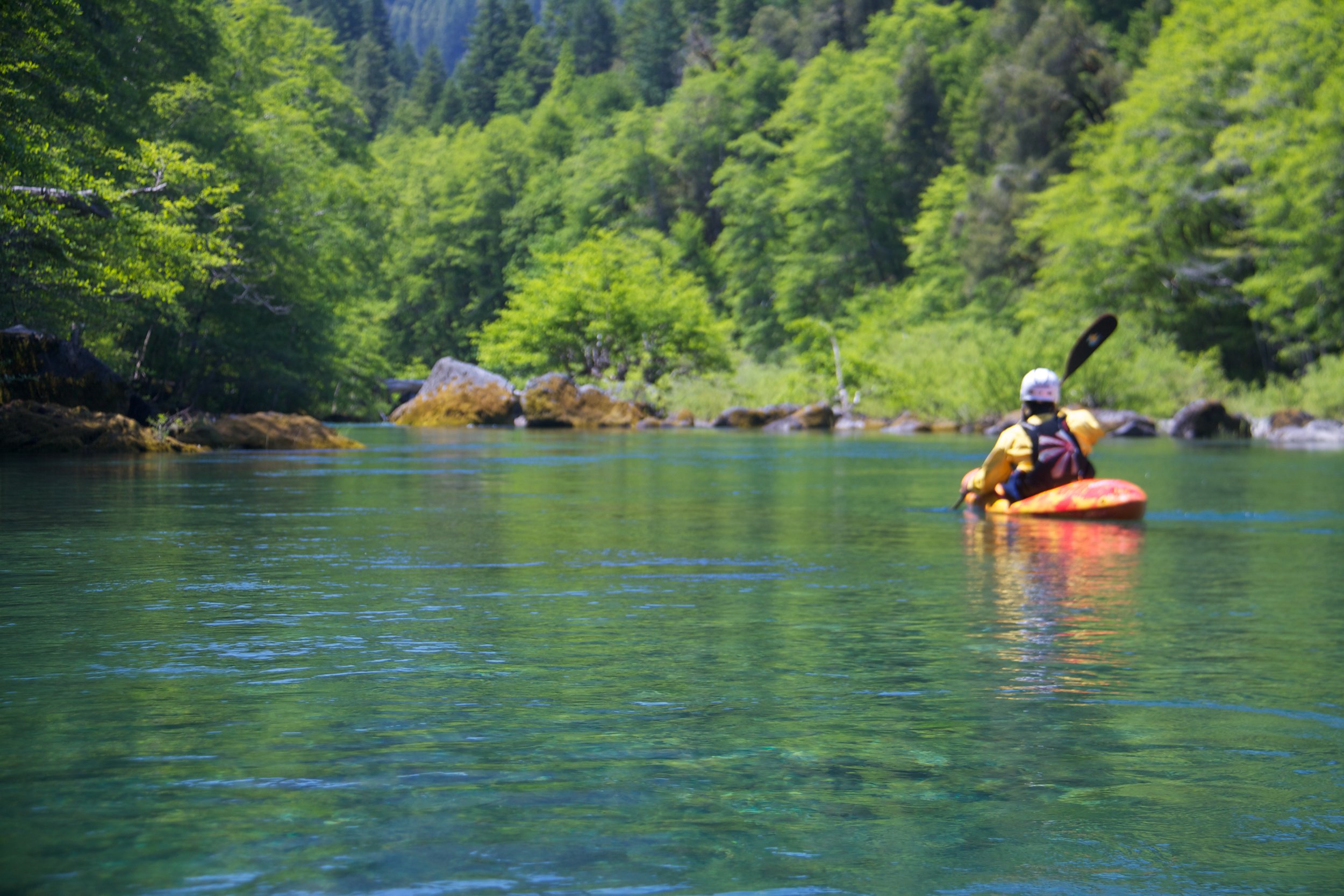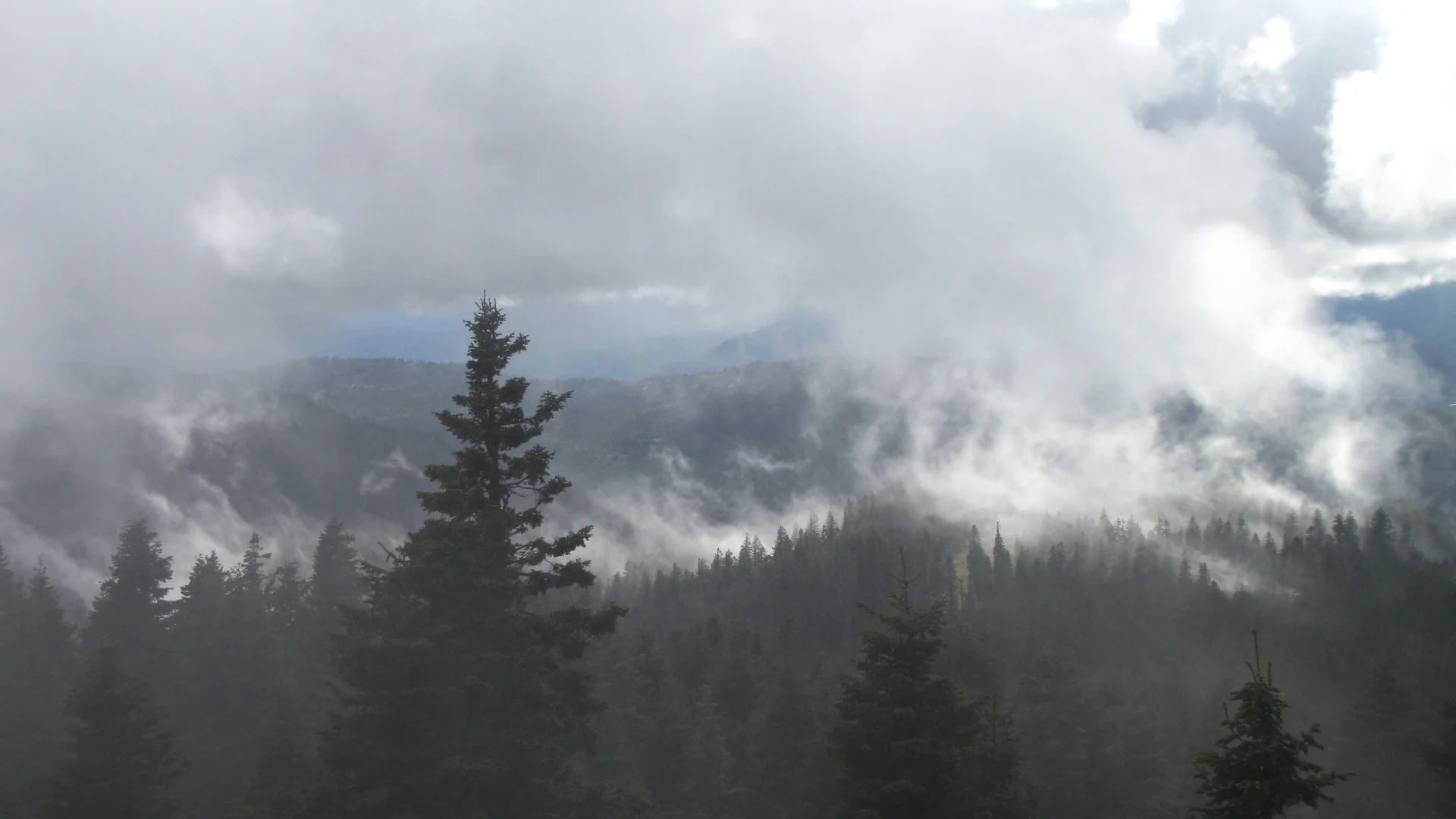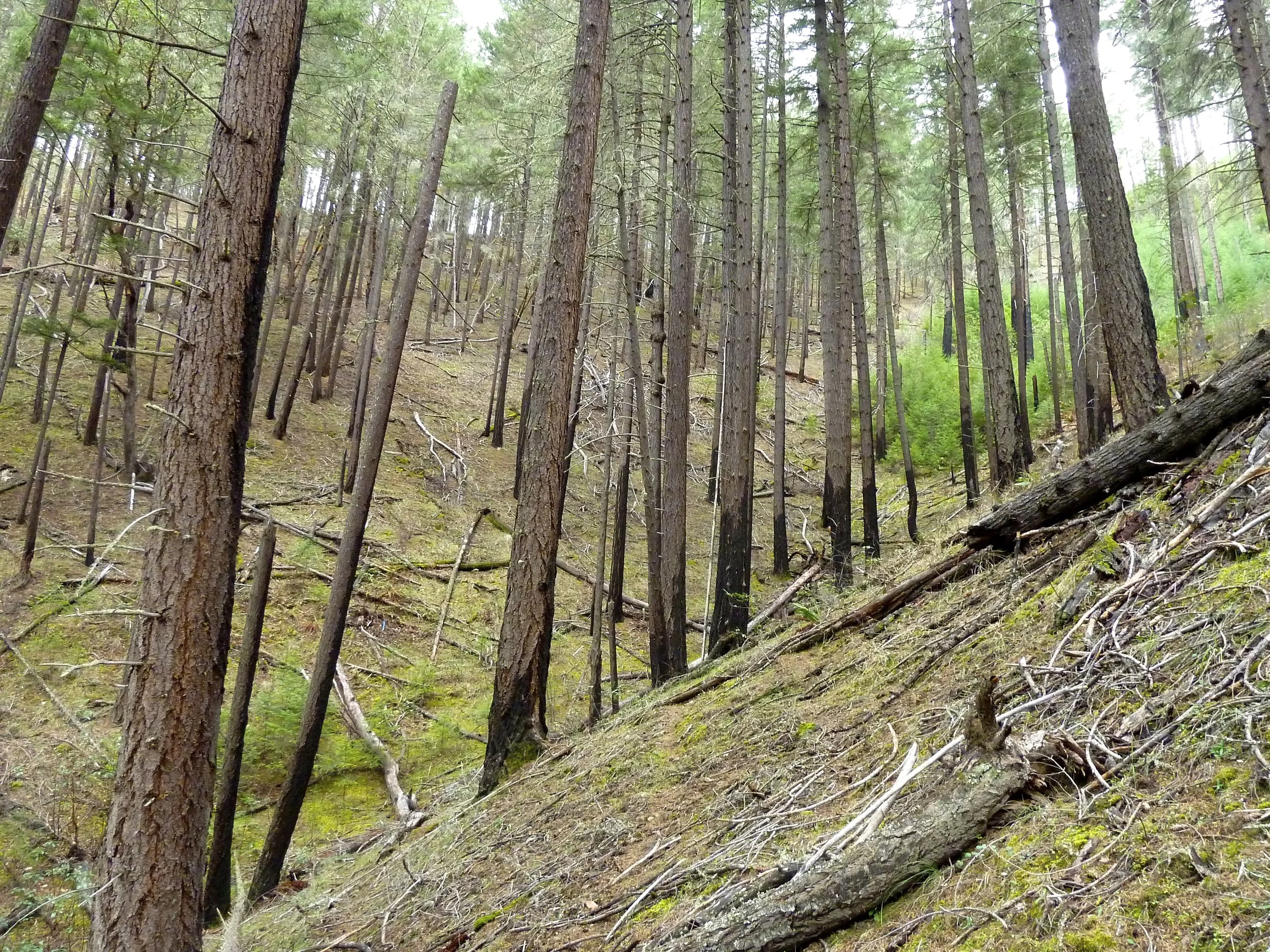On August 5, the Bureau of Land Management (BLM) signed a management plan for western Oregon, largely ignoring a formal protest from 22 conservation and fishing groups. The BLM plan eliminates protections for streamside forests, increases clearcutting in wet forests, and removes 2.6 million acres of federally managed public forests from the 1994 Northwest Forest Plan
Read MoreThe 1937 O&C Act overhauled the timber management and revenue distribution scheme. It allowed the federal government to pay fifty percent of gross timber revenues directly to the O&C counties, plus twenty five percent (for unpaid Railroad property taxes) to O&C lands. In 1953 Congress directed 25% of the revenue to road building and other capital improvements on the O&C lands, leaving only 50% paid to counties. These payment schemes tied timber harvests to county revenues and made county government a champion of increased logging.
Read MoreWe are celebrating the recent victory to protect some of our most prized rivers from proposed industrial strip mining for a period of 20 years. We are hopeful that this victory will stand, even in the Trump administration.
Read MoreAfter four local public hearings and thousands of letters to elected officials, support for the Cascade-Siskiyou National Monument has been heard! On Thursday, January 12, 2017, President Obama used his authority under the Antiquities Act to expand the Cascade-Siskiyou National Monument in southern Oregon.
Read MorePart of our work at KS Wild is to track management decisions by the US Fish and Wildlife service to list at-risk species as threatened or endangered under the Endangered Species Act. In continuing a 22-year battle to protect their declining populations, we filed lawsuit with three of our conservation allies to list the Pacific fisher. Other species we continue to fight for include the Siskiyou Mountain Salamander, the Wolverine and four species of Lamprey.
Read MoreThe history of the 2.5 million acres of land managed by the Bureau of Land Management (BLM) in western Oregon dates back to how the west was settled. One of the biggest obstacles to westward expansion was transportation. Moving goods from one place to the next and encouraging people to move thousands of miles across a rugged, wild landscape was a challenge without the infrastructure and modes of transport we enjoy today.
Read MoreAmong the many unusual endemic species found nowhere else in the world, there is a tree, carving out its existence on high ridgelines within these remote mountains. I was surprised the first time I laid eyes on the Brewer spruce, having never seen anything like it on my mountain walks. With its long weeping branching, it’s quite a forest char- acter and hard to miss. Not only does it stand out in a sea of Douglas fir, true firs, and pines, but its physical structure hints at origins from long ago. Brewer spruce remains one of the rarest among American spruce species.
Read MoreA suite of species depend on fire for their life cycles. Healthy stands of white and purple Ceanothus burst forth after fire and provide for a suite of pollinators. Knobcone pines love the heat that enables their cones to release seeds. Black- backed woodpeckers thrive by foraging amongst blackened snags. Fire is as necessary as water is to the local forest ecosystem.
Read MoreLong fights with no reward can feel tiresome and unrewarding after awhile. That’s why this May we held the first annual Return to the Wild, a rustic retreat along the Illinois River for female activists from around Southwest Oregon. Elders told stories of past trials and triumphs, we bonded and benefited from the therapy of nature, and were reinvigorated for our work ahead.
Read MoreToday, the backyard forests of the Applegate are primarily managed by the BLM. The guiding document for the future of these public lands is the Resource Management Plan (RMP), which includes all aspects of land management ranging from restoration objectives, to fire prevention measures and logging plans.
Read MoreThe Bureau of Land Management administers the public forests that surround communities in Western Oregon. These are our backyard forests! Places like the Wild Rogue River, the Applegate Valley foothills and rare plant hotspots in the Illinois Valley deserve our best conservation efforts.
Read Morehe Oregon Department of Forestry (ODF) has failed to protect the clear, cold streams and fish in our region by excluding them in their decision to expand stream buffers for Western Oregon’s forests. ODF granted limited protections for streams to the north but left out almost the entirety of the Siskiyou region (essentially the Rogue Basin) in their policy decision.
Read MoreEnvironmental stewards can operate in a variety of ways: as practitioners, donors, and doers. Our staff works hard each day as practitioners, working directly with government agencies and stakeholders to promote best practices in the management of our public lands. Foundations and community members serve as vital donors, providing financial support for our work. The doers are all of you—KS Wild members, volunteers, interns, and partners—who take part in our work, voice your support for public lands, or even just get out on a hike.
Read MoreWhile most Americans cherish the idea that public lands belong to and benefit all of us, corporate timber, mining and grazing interests have long sought to privatize public lands in order to maximize profits to their respective industries. While subsidized logging, mining and grazing occur on the vast majority of public lands, these extremists bristle at the idea of there being any rules regarding their exploitation of our forests and rivers.
Read MoreRegularly visited by botanists, it boasts the highest wildflower diversity in Oregon. Fisher folk appreciate the habitat it provides for steelhead and cutthroat trout, and it is well known by locals for always running clear. Before entering the Wild and Scenic Illinois River, it flows through a rugged, beautiful wilderness landscape. Part of this area, the South Kalmiopsis Roadless area was recommended as an addition to the Kalmiopsis Wilderness in 2004.
Read MoreWestern Oregon’s BLM lands support salmon, steelhead, and wildlife while delivering clean water and recreational values to the public. These forests are source-drinking watersheds for hun-dreds of thousands of Oregonians, they sequester large amounts of carbon, and they provide crucial ecological functions. The natural amenities found on these public lands are highly valued and sought after, from local residents to tourists from around the world.
Read MoreAfter decades of trapping and poisoning, the last wolf in California was shot in 1924. Since then, roads and highways were built and huge tracts of forest have been converted to industrial tree farms. Today, the wolf re-enters a landscape filled with strip-malls, subdivisions, climatic shifts and severe drought. It will take work with residents in areas where wolves migrate to ensure co-existence.
Read MoreRetaining trees in streamside areas is incredibly important to keeping streams cool and water clean. A healthy riparian buffer where logging is limited adjacent to streams serves a number of important functions. The shade from trees prevents the water from getting warmer, something that will be more and more important in the face of climate change.
Read MoreRogue Riverkeeper and our allies have been fighting the proposal for a gas pipeline, power plant, and export terminal through southern Oregon for years. This dangerous and unnecessary project threatens private property owners with eminent domain, will impact dozens of threatened and endangered species, will clear-cut a 95 foot swath for 235 miles, will raise our gas rates here at home, and accelerate climate change.
Read MoreThe forests of the Klamath-Siskiyou Mountains are dependent upon fire. For millennia, lightning storms have ignited blazes that sparked the unique plant communities, tree composition and biodiversity that define the region. Our forests are evolved to accommodate the regenerative force of fire.
Read More
